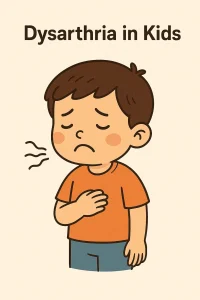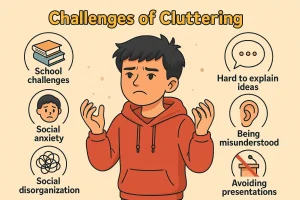5 Key Risk Factors for Still Face Syndrome in Young Children
By Wellness Hub
Last Updated: February 5, 2025
Interacting with your child through smiles and expressions is crucial for their emotional development. But what happens when these interactions pause, and caregivers’ expressions become blank? This phenomenon, known as Still Face Syndrome, can disrupt a child’s emotional growth and affect their future relationships. In this article, we’ll uncover the key risk factors for Still Face Syndrome and offer practical guidance to prevent its long-lasting effects.
Also read: How Still Face Syndrome Affects Your Child’s Emotional Health
The Importance of Early Childhood Emotional Development
When we think about a child’s development, we often focus on physical milestones—like their first steps or first words. But emotional development is just as crucial, if not more so, in shaping who they become. Emotional responses in early childhood—those smiles, cries, and coos—aren’t just adorable; they’re fundamental building blocks for how children learn to connect with the world around them.
Babies and young children rely on emotional feedback from their caregivers to feel safe, loved, and understood. This feedback, such as a mother’s smile or a father’s comforting touch, helps them form secure attachments. Over time, these interactions teach children how to regulate their own emotions, build healthy relationships, and navigate the ups and downs of life. In short, a child’s emotional responses are the foundation of their emotional health.
Now, imagine what happens when there’s a disruption in this vital process. If a parent or caregiver is emotionally unavailable—whether due to stress, mental health issues, or simply being overwhelmed—the child misses out on these critical interactions. As a result, they may struggle to develop trust, empathy, and the ability to regulate their emotions. This kind of disruption in parent-child interaction can have long-lasting effects on a child’s emotional health, leading to issues such as anxiety, emotional withdrawal, or difficulty forming relationships later in life.
Also Read: Supporting Emotional Regulation in Kids: Simple Ways to Help
5. Key Risk Factors for Still Face Syndrome
When it comes to Still Face Syndrome, understanding what might put a child at risk is crucial for both prevention and early intervention. Below are the five key risk factors that can increase a child’s vulnerability to this emotional disconnect:
a. Inconsistent or Poor Parent-Child Interaction
One of the most significant risk factors for Still Face Syndrome is a lack of consistent emotional engagement between parents and children. Children thrive on emotional connection—things like eye contact, smiles, and responding to their needs. When a parent or caregiver doesn’t engage emotionally or frequently neglects to respond, the child can feel confused or rejected. Over time, this lack of response can lead to feelings of insecurity, which are at the heart of Still Face Syndrome.
Whether it’s due to busy schedules, stress, or simply not understanding the importance of these moments, inconsistent engagement can cause long-term challenges in a child’s emotional development. It’s critical for parents to be mindful of these small yet important moments of interaction.
b. Prolonged Exposure to Stress
Growing up in a stressful environment is another major factor that contributes to Still Face Syndrome. Situations like family conflict, financial problems, or constant instability at home can leave both parents and children feeling overwhelmed. When parents are stressed, they may unintentionally withdraw emotionally, which impacts how they respond to their child’s needs.
For children, witnessing or being part of a stressful environment can cause them to feel anxious or emotionally neglected. This lack of a nurturing, stress-free atmosphere makes it more difficult for them to form secure emotional connections, increasing the likelihood of emotional disconnection over time.
c. Parental Mental Health Issues
Parents dealing with mental health challenges, such as depression or anxiety, are at higher risk of being emotionally unavailable. Depression, in particular, can lead to a withdrawal from social interactions, leaving parents feeling too drained to engage meaningfully with their child. The result is often an unintentional emotional detachment, where the parent may not respond to the child’s emotional cues, leading to the development of Still Face Syndrome.
When a caregiver’s mental health is affected, it can ripple into the child’s emotional well-being. For this reason, it’s important for parents who are struggling to seek support, whether through therapy or helpful resources, so they can maintain healthy emotional bonds with their children. Wellness Hub offers a range of tools to help both parents and children navigate mental health challenges.
d. Lack of Social Stimulation
Social interactions play a huge role in a child’s emotional and cognitive development. When a child is deprived of regular, positive social stimulation—whether it’s with parents, other family members, or peers—it can stunt their emotional growth. Children learn by observing, imitating, and interacting with others. Without these opportunities, they may find it difficult to express emotions or connect with those around them.
For example, if a child spends too much time in isolation, or their parents are frequently distracted or unavailable, the child might not learn how to properly communicate or respond to emotional cues. This isolation can contribute to emotional disconnection, one of the hallmarks of Still Face Syndrome.
e. Early Signs of Developmental Delays
Children who show early signs of developmental delays—whether in speech, communication, or motor skills—may also be at greater risk for Still Face Syndrome. These delays can make it harder for the child to interact or respond in typical ways, which can, in turn, impact how caregivers engage with them. If parents are unsure how to interact with a child who is not responding as expected, they might pull back emotionally, not realizing how important their engagement still is.
Read more: Boosting Toddler Development: Occupational Therapy Insights
The Impact of Still Face Syndrome on Childhood Emotional Growth
Still Face Syndrome, if left untreated, can have long-term effects on a child’s emotional and behavioral development. Early childhood is a critical period for emotional growth, and when a child doesn’t receive the emotional responses they need, it can create lasting challenges.
One of the main concerns is the development of emotional regulation. Children who experience emotional disconnection due to Still Face Syndrome may struggle to manage their emotions. They might become easily frustrated, anxious, or withdrawn. This can also manifest in behavioral issues, where the child might have trouble forming healthy relationships or responding appropriately to social situations. Over time, these challenges can lead to more significant issues, such as social anxiety, low self-esteem, or even difficulty with emotional bonding later in life.
Another potential impact is on the child’s ability to trust and engage with others. Secure attachments formed in early childhood play a vital role in shaping how we connect with others as adults. When that bond is disrupted, it can lead to a child becoming emotionally distant or overly dependent in relationships. This emotional instability can affect them well into adolescence and adulthood, influencing how they handle friendships, romantic relationships, and even work interactions.
Conclusion
Still Face Syndrome can have a serious impact on a child’s emotional and social development, but the good news is that it’s preventable with the right approach. By understanding the key risk factors—such as inconsistent emotional engagement, prolonged stress, parental mental health issues, and lack of social stimulation—you can help reduce the chances of emotional disconnection. Simple actions like making eye contact, responding to your child’s needs, and spending quality time with them can go a long way in supporting their emotional growth.
The earlier you detect and address any emotional concerns, the better your child’s chances of developing healthy relationships and emotional resilience. Remember, taking care of your own mental well-being is also crucial, as it helps you stay emotionally available to your child. If you ever feel unsure about how to support your child or need extra guidance, Wellness Hub offers resources to help both parents and children. Simple, consistent interactions with your child can make all the difference in their emotional development.
Frequently Asked Questions:
1. What is Still Face Syndrome?
Still Face Syndrome is a psychological phenomenon where infants or young children experience emotional distress when their caregivers show a lack of emotional engagement, such as maintaining a blank or unresponsive facial expression. This can impact their emotional development over time.
2. What are the key risk factors for Still Face Syndrome?
The main risk factors for Still Face Syndrome include inconsistent parent-child interaction, prolonged exposure to stress, parental mental health issues like depression or anxiety, lack of social stimulation, and early signs of developmental delays.
3. How does Still Face Syndrome affect a child’s emotional development?
Still Face Syndrome can lead to long-term emotional challenges, such as difficulty regulating emotions, forming relationships, and handling social situations. Children may experience anxiety, frustration, or withdrawal if they do not receive adequate emotional engagement from caregivers.
4. Can parental stress contribute to Still Face Syndrome?
Yes, prolonged exposure to stress, such as family conflict or financial problems, can affect how a caregiver interacts with their child. Stress may lead to emotional withdrawal, increasing the risk of Still Face Syndrome in children.
5. How can parents prevent Still Face Syndrome?
Parents can prevent Still Face Syndrome by engaging in consistent emotional interactions with their child, making eye contact, responding to their needs, and creating a positive and stress-free environment. Additionally, seeking help for personal mental health issues can support better parent-child bonding.
6. Can mental health issues in parents affect their child’s emotional growth?
Yes, parental mental health issues such as depression or anxiety can lead to emotional detachment, affecting the child’s emotional development. It’s important for parents to seek help if they are struggling with mental health concerns to ensure they remain emotionally available to their child.
7. What are the long-term effects of untreated Still Face Syndrome?
If untreated, Still Face Syndrome can cause long-term emotional and behavioral issues, such as difficulty forming relationships, social anxiety, and challenges with emotional regulation. Early intervention can help mitigate these risks.
8. What are the early signs of emotional disconnection in children?
Early signs of emotional disconnection may include a child becoming withdrawn, showing little emotional expression, or not responding to social cues. Developmental delays in communication or social skills may also be indicators.
9. How can early intervention help with Still Face Syndrome?
Early intervention can help by improving emotional engagement between the parent and child. Consistent interaction, positive reinforcement, and seeking support when needed can help rebuild emotional bonds and prevent long-term emotional issues.
10. Where can I find resources to help with Still Face Syndrome?
You can find helpful resources for addressing Still Face Syndrome through platforms like Wellness Hub, which provides tools and guidance for both parents and children to foster healthy emotional development.
About the Author:
Shravanaveena Gajula
M.Sc ., Speech and Language Pathology (9+ years of experience)
Shravanaveena Gajula is a dedicated Audiologist and Speech-Language Pathologist with a BASLP and an M.Sc in Speech and Language Pathology. With experience spanning multiple settings, including Wellness Hub and Ashray Akruti, Veena specializes in a wide range of disorders from developmental issues in children to speech and language assessments in adults. Her expertise includes parent counseling, managing speech sound and fluency disorders, and creating individualized therapy programs. Veena is also PROMPT certified and an author of several insightful blogs on speech and language pathology, aiming to educate and assist caregivers in supporting their loved ones.
Book your Free Consultation Today
Parent/Caregiver Info:
Client’s Details:
* Error Message









